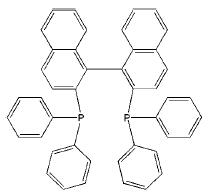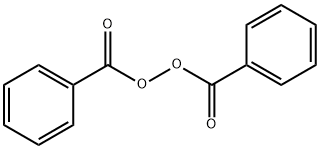Treat Acnes with Benzoyl Peroxide
Oct 30,2019
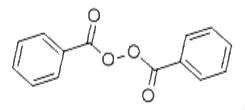
Benzoyl Peroxide is a peroxide with antibacterial, irritant, keratolytic, comedolytic, and anti-inflammatory activity. Upon topical application, benzoyl peroxide decomposes to release oxygen which is lethal to the bacteria Proprionibacterium acnes. Due to its irritant effect, benzoyl peroxide increases turnover rate of epithelial cells, thereby peeling the skin and promoting the resolution of comedones. Benzoyl peroxide is used in the treatment of acne vulgaris.Benzoyl peroxide is a well-known ingredient for fighting acne. Available in over-the-counter (OTC) gels, cleansers, and spot treatments, this ingredient comes in different concentrations for mild to moderate breakouts.While benzoyl peroxide can effectively get rid of bacteria and dead skin cells that clog your pores, it has limitations. Benzoyl peroxide works to treat and prevent acne by killing bacteria underneath the skin, as well as helping the pores shed dead skin cells and excess sebum (oil).
Benzoyl peroxide for pimples
Benzoyl peroxide works particularly well for inflammatory acne, which is characterized by red bumps that contain pus — pustules, papules, cysts, and nodules — instead of whiteheads and blackheads.
Benzoyl peroxide for cystic acne
Cystic acne is considered the most serious form of acne, which also makes it the most difficult to treat.It’s characterized by hard bumps below the surface of your skin. While these pimples may have pus deep inside them, it’s difficult to identify any prominent “heads.”P. acnes bacteria is one contributor to cystic acne, which benzoyl peroxide may help treat in combination with prescription medications.If you have this type of acne, consult a dermatologist for your best treatment options.
Benzoyl peroxide for blackheads and whiteheads
Blackheads and whiteheads are still considered acne. However, they are classified as noninflammatory because they don’t cause the red bumps that are associated with other types of acne pimples.You may be dealing with both of these types of acne and might be wondering if you can use benzoyl peroxide for noninflammatory spots too.While benzoyl peroxide can help treat oil and dead skill cells that clog your pores, this may not be the best treatment option available for blackheads and whiteheads.
Benzoyl peroxide for acne scars
Acne scars are sometimes a result of an acne outbreak. This is especially the case with inflammatory acne, even if you successfully resist the urge to pick at the lesions. Acne scars can worsen with sun exposure, so it’s important to wear sunscreen every day. In theory, benzoyl peroxide could also help shed dead skin cells and make the scars less prominent. However, research doesn’t support this use.
Benzoyl peroxide comes in the form of many acne treatment products. It’s important to select the right one for your skin care concern as well as preference.For example, you may prefer to use a wash formulated specifically for your body rather than your face. Or you might decide to choose a gel.Another key is to choose the appropriate concentration. The concentration that you choose to use may depend on your skin.Some people can tolerate products with a high percentage of benzoyl peroxide (up to 10 percent) on their skin. Others may prefer a lower percentage.What concentration to use also depends on where you apply the benzoyl peroxide.The face is rather sensitive, so many choose to use a lower concentration (around 4 percent) in that area, while the chest and back are more resilient and can tolerate a higher concentration.
Benzoyl peroxide may be found in the following acne treatment products:
Acne creams and lotions: typically applied once or twice a day on the entire area of skin as both a treatment and preventive measure;
Face washes and foams: used once or twice a day to help prevent acne and treat existing lesions;
Acne body washes and soaps: ideal if you have frequent breakouts on the chest, back, and other areas of the body;
Gels: tend to come in the form of spot treatments with higher concentrations and are typically applied only to the affected area.
References
[1]https://www.healthline.com/health/benzoyl-peroxide-for-acne#types-of-products
[2]https://pubchem-ncbi-nlm-nih-gov.libproxy.wlu.ca/compound/ Benzoyl-peroxide#section=Overview
[3]https://onlinelibrary-wiley-com.libproxy.wlu.ca/doi/abs/10.5694/ j.1326-5377.1990.tb126150.
- Related articles
- Related Qustion
- Benzoyl peroxide: a widely used organic acid Sep 22, 2023
Benzoyl peroxide is an organic acid with widely used
- Benzoyl peroxide: Medical use, mechanism and side effects May 16, 2023
Benzoyl Peroxide is a peroxide with antibacterial, irritant, keratolytic, comedolytic, and anti-inflammatory activity.
Isolated in 1968, ingenol (1), a highly oxygenated tetracyclic diterpene classified as a member of the phorboid family, is the parent compound of several dozen naturally occurring ingenanes.....
Oct 30,2019Plant extractsβ-Carotene is an organic, strongly colored red-orange pigment abundant in plants and fruits. The name β-Carotene comes from the Greek "beta" and Latin "carota" (carrot).....
Oct 30,2019Vitamins and Minerals medicinesBenzoyl peroxide
94-36-0You may like
Benzoyl peroxide manufacturers
- Benzoyl peroxide
-
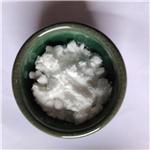
- $0.00 / 1KG
- 2023-09-06
- CAS:94-36-0
- Min. Order: 1KG
- Purity: 99%
- Supply Ability: 500000kg
- Benzoyl Peroxide
-
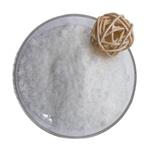
- $10.00 / 1kg
- 2023-07-31
- CAS:94-36-0
- Min. Order: 10kg
- Purity: 99%
- Supply Ability: 20tons
- Benzoyl peroxide
-
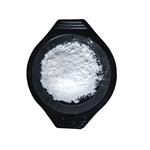
- $0.00 / 25KG
- 2023-06-29
- CAS:94-36-0
- Min. Order: 1KG
- Purity: 99%
- Supply Ability: 50000KG/month




